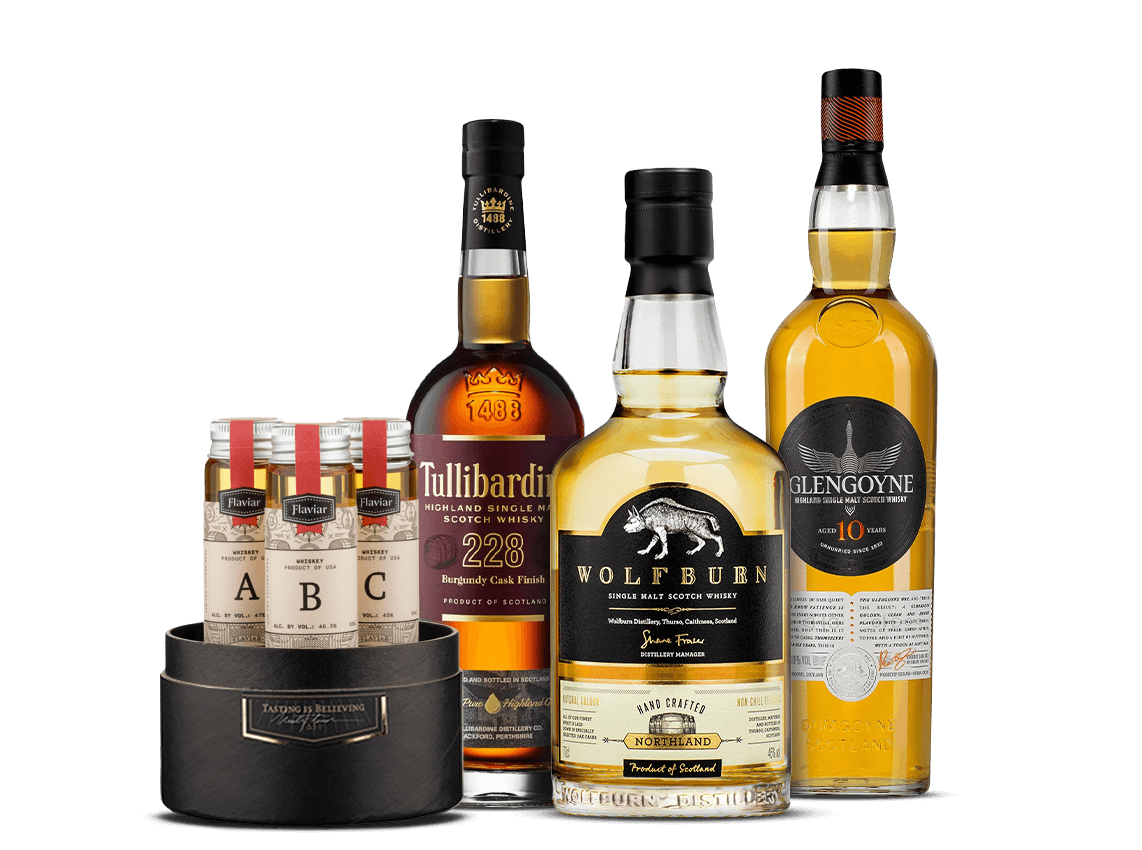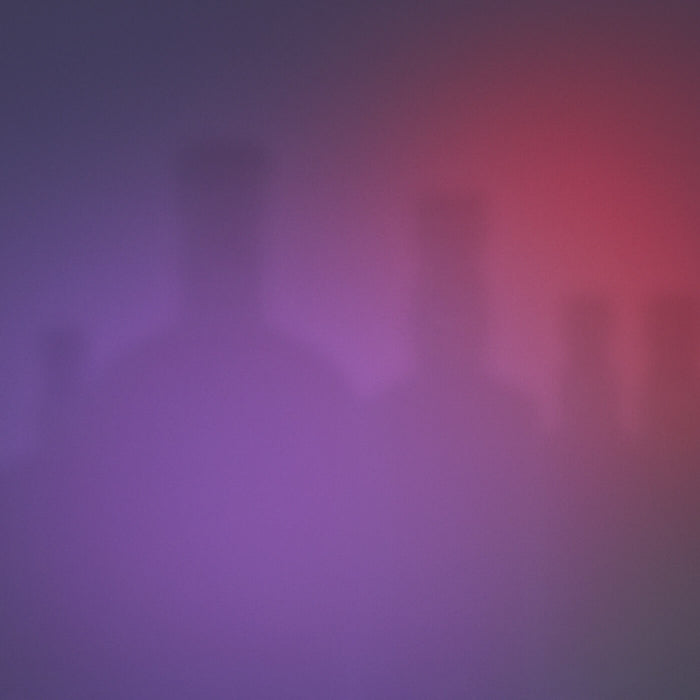

The Highlanders' Saga
 Only left •Last few at this price. Grab it now!
Only left •Last few at this price. Grab it now!
Flaviar Black Membership (£40/year) will be added, unlocking reduced prices on select products and other perks.
Flaviar Black Members have exclusive access to hundreds of specially priced bottles. Sure you don’t want it?
- CategoryScotch
- Volume 3 x 50ml
The Scottish Highlands are famous for their breathtaking nature, friendliness, ancient clans, and, of course, immortal swordsmen.
They’re not fascinating just for the beauty and exciting past (the Highlands, not the swordsmen) but also for the world-class Whisky produced between Loch Lomond and the Pentland Firth.
The Highlands are the largest Whisky region, with every fourth Scotch coming from there. Highlander Whiskies are beloved for their sweet, fruity, and full-bodied characters, although generalizing them like that is a wee unfair as the region is incredibly diverse: from the grassy nuttiness of the South and the maritime fruitiness of the West to the opulent complexity of the North and the richness of the East.
To capture the entire picturesque flavor landscape of the Highlander Scotch, you’d have to taste each expression from every distillery (almost 40 at the moment). This Tasting Box will kick off your expedition to the region with a starter pack of three carefully-selected samples: a light and approachable gateway dram from Glengoyne, a wine-finished delight from Tullibardine, and a sea-beaten Viking from Wolfburn. They are a trio of renegades that dare to do things differently to excite your palate and challenge the status quo.
Glengoyne 10 Year Old comes from an ancient distillery on the borderlands of the Highlands and Lowlands—and it takes advantage of the location for a unique approach: the Spirit is conjured in the Highlands, while they mature it in sherried casks in the Lowlands. Their way is unhurried, they say, as they dry barley solely by air, their stills are the slowest in Scotland, and it takes six years to bring their barrels to perfection. Expect vanilla and honey on the nose, followed by fruits and caramel on the palate.
Tullibardine 228 Burgundy Cask Finish will keep your taste buds in the southern edge of the region with spices, red fruits, and more honey, paraphrasing flavors inherited from 228-liter Pinot Noir barriques from Chateau de Montrachet in Burgundy. The independent family-owned Scotch maker bets on complete control over their Whisky, distilling, maturing, and bottling it on site.
With Wolfburn Northland, you’re flying to the northernmost distiller with a long history, with the mothballed house of Scotch magic revived in 2013. Honoring the fabled sea wolf on their emblem, they source the water from the boreal brook of Wolf Burn, producing unique Whisky that keeps winning awards. Northland is their first chapter, and although it’s not peated originally, it acquires delicate smoke accents from Islay barrels in which almost half of each batch is aged. In addition to shades of peat, expect chocolate, vanilla, dried fruits, and honey.
Welcome to the Highlands, dear Whisky explorer—we hope this is but the beginning of your long, exciting tasting journey. Cheers!
Smartass Corner:
1) Whisky distilling goes way back to 1494 when the first recorded batch was made by a posse of monks who acquired about 60 gallons of barley and decided to turn it into 'aqua vitae.' They created the first 1,500 bottles of Scotch in History.
2) The name Tullibardine means 'vantage point'; in Gaelic and originates from the name given to a little medieval chapel on a hill near the distillery that dates back to 1446.
3) The new Wolfburn stands next to the Wolf Burn stream. But an original Wolfburn, located 350 miles away, was once a behemoth of the 1800s, cranking out 125,000 liters per year according to tax documents from the era.
4) Because of their slow distillation process, the tagline for their Whisky is 'Unhurried Since 1883.'
5) Only three distillers can use the 'Royal' in their names, and all come from the Highlands: Royal Brackla, Glenury Royal, and Royal Lochnagar.
6) The Highlands and the Lowlands were divided in the 18th century, and like for many things Whisky, the reason for it was taxes. Two acts drew a precise line between the regions, introduced a licensing system, and matched the taxes in Scotland to those in England. Fun fact: The Highland Whisky makers ignored the taxman and managed to produce the finest Scotch, while the Lowlanders mass-produced undrinkable stuff that was transformed into Gin to cater to the Gin-crazed Londoners.
7) If you added Speyside, technically a sub-region of the Highlands, the share of Scotch Whisky makers from the region would be 85%!
This product is available in:
Note: Once an order has been safely & successfully delivered, we do not accept returns due to change of heart or taste. Due to state regulations, we cannot accept the return of alcohol purchased by a customer in error.
What’s in the box?




























